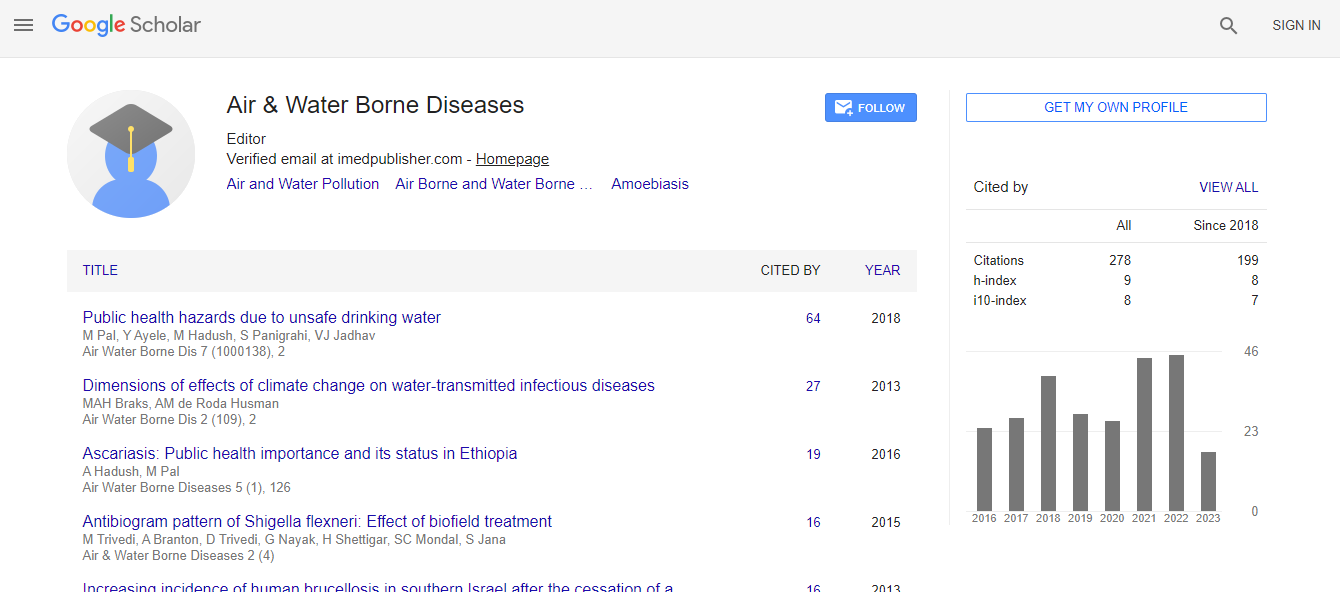Research Article
Recovery of Helicobacter Pylori from Sewage in Basrah Governorate and its Confirmation by 16S rRNA
Amin A. Al-Sulami1*, Asaad M. R. Al-Taee2 and Alaa Y. AL-Rubyai21Department of Biology, College of Education, University of Basrah, Basrah, Iraq
2Department of Marine Environmental Chemistry, Marine Science Center, Basrah, Iraq
- *Corresponding Author:
- Amin A. Al-Sulami
Department of Biology, College of Education
University of Basrah, Basrah, Iraq
E-mail: Aminabdulah@yahoo.com
Received Date: June 28, 2012; Accepted Date: August 28, 2012; Published Date: August 30, 2012
Citation: Al-Sulami AA, Al-Taee AMR, AL-Rubyai AY (2012) Recovery of Helicobacter Pylori from Sewage in Basrah Governorate and its Confirmation by 16S rRNA. Air Water Borne Dis 1:104. doi:10.4172/2167-7719.1000104
Copyright: © 2012 Al-Sulami AA, et al. This is an open-access article distributed under the terms of the Creative Commons Attribution License, which permits unrestricted use, distribution, and reproduction in any medium, provided the original author and source are credited.
Abstract
A total of one hundred and fifty six sewage samples were collected from three regions in Basrah governorate namely Five miles, Al-Jame’eyat and Al-Ashar from February 2008 to February 2009. This study examined the possibility that sewage harbors Helicobacter pylori. Because of existing methods for the direct culture of H. pylori from sewage are unsuccessful, a modified Columbia urea agar and Monophasic-Diphasic culture set up have been exploited. As a result 76 isolates were identified as H. pylori using conventional techniques. Polymerase chain reaction technique was used to confirm the identity of H. pylori isolates using primers for 16S rRNA and Ure A gene. Only 6 isolates out of 76 gave positive results for the identification by PCR using 16S rRNA, and all of them were from Five miles region. Also, these 6 isolates have an identical biochemical profile. On other hand the 76 H. pylori isolates have not been confirmed by PCR using Ure A gene.
These findings suggest that sewage may represent a reservoir for this bacterium and reveal that conventional tests for the identification of H. pylori are not sensitive enough to rely on.
The fact that all the six isolates were from one region and one of them showed an RFLP pattern similar to those from clinical and drinking water may be of an epidemiologic significance.

 Spanish
Spanish  Chinese
Chinese  Russian
Russian  German
German  French
French  Japanese
Japanese  Portuguese
Portuguese  Hindi
Hindi 